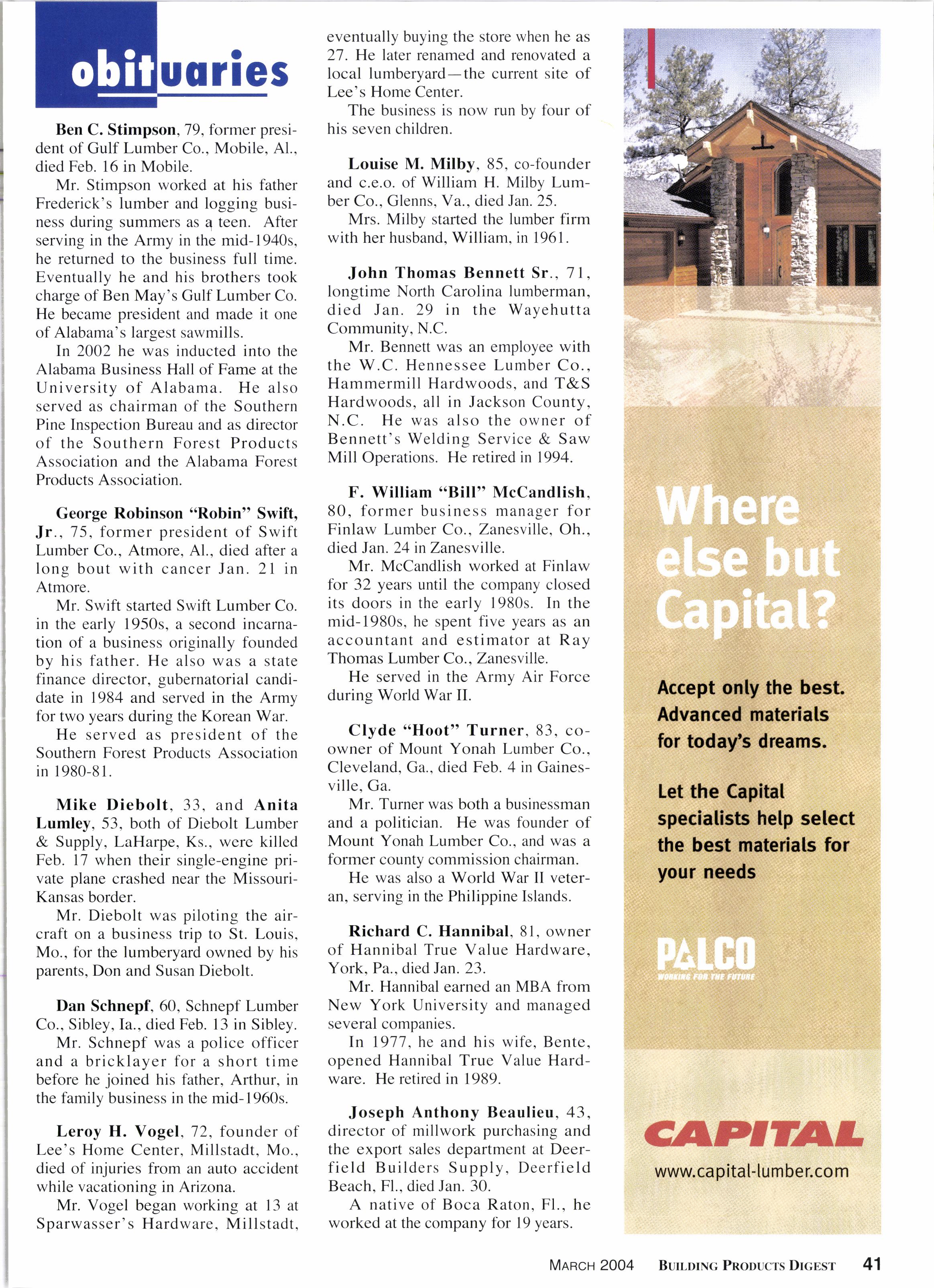
2 minute read
Stead nce of th i rd-pa rty certification
rffHE forest products industry's I increasins commitment to sustainable forest mlanagement parallels the growing acceptance of third-party certification systems.
"As the demand for more 'green' buildings grows, more light is shed on environmentally friendly building products. Building products that come from well-managed forests, like those independently third-party certified under a credible forest certification programs, are a vital component of the green building movement," said Rick Cantrell, senior director of forest policy & sustainable forestry for the American Forest & Paper Association.
The two most dominant certification systems are AF&PA's Sustainable Forestry Initiative program and standards from the Forest Stewarship Council.
Worldwide, significantly more companies subscribe to the FSC plan. However. in North America, more acreage is covered by the SFI program. SFI now encompasses more than 169 million acres in the U.S. and Canada, with 206 members.
According to Cantrell, "In less than 10 years, the SFI program has shown tremendous growth and achieved remarkable results. In the last two years, the SFI Standard, the document to which all SFI program participants must adhere, has been substantially enhanced to further the protection of forests of exceptional conservation value, those forests identified by scientists and academicians as 'imperiled' or 'critically imperiled."'
Companies seeking SFI certification are required to develop and implement plans for protection of sites containing imperiled plants, animals, and ecological communities. Further, the SFI Standard requires program parlicipants to implement policies for their international wood procurement operations to help prevent illegal logging and promote conservation of biodiversity hotspots and major tropical wilderness areas.
The improvements to the standard came at the direction of the Sustainable Forestry Board, an independent organization responsible for maintaining and enhancing the Standard and certification procedures. The SFB has 15 members, two-thirds of which come from a wide range of non-industry interests, including: environmental/conservation organizations ; public officials (state and/or federal agencies) ; professional/academic groups; logging professional, and nonindustrial landowners. The remaining five board members are representatives from SFI program participants.
As part of the SFI program's explicit goal of continuous improvement, its board is in the process of further improving the SFI Standard. Late last year, the board opened up the standard to all interested parties for public comment. The board has received over one hundred comments and is currently studying those comments. and the new SFI Standard will be refeased in mid-December 2004.
As well, the non-profit FSC has set high standards that ensure forestry is practiced in an environmentally responsible, socially beneficial, and economically viable way. Independent certification organizations are accredited by FSC to carry out assessments of forest management to determine if standards have been met. Certifiers also verify that companies claiming to sell FSC-certified products have tracked their supply back to FSC-certified sources. The chain-ofcustody certification ensures that consumers can trust the FSC label.
In addition, FSC is the only certification accepted for new (not recycled or reclaimed) wood materials in the burgeoning Leadership in Energy & Environmental Design (LEED) program of the U.S. Green Building Council. Under this program, points are awarded for the use of certain green building materials. Several other green building initiatives are currently in development, providing more evidence that forest issues are a growing concem.
As an example of the popularity of certified products, FSC points to Rulon Co., Brunswick, Ga., a manufacturer of suspended wood, uPVC ceiling systems and wall panels. Rulon first sought FSC certification for their products because, according to production manager Clay Seale, the company wanted to expand into the certified wood market and "in order to be competitive, we needed to have FSC capability."
Recent commercial projects that have specified the use of FSC-certified wood from Rulon include the Osoyoos Border Crossing, which specified a 3,500-sq. ft. ceiling; the science building at Seattle Pacific University, which required a 2,000-sq. ft. panel grille system, and several newly renovated police stations in Chicago.









